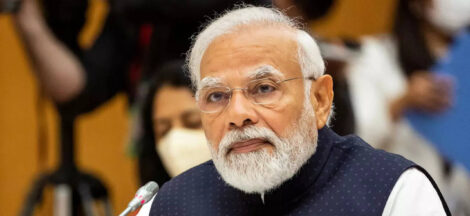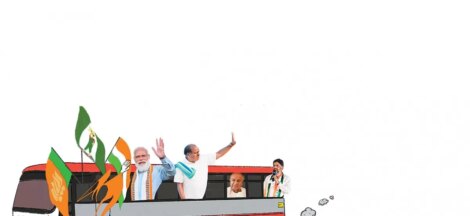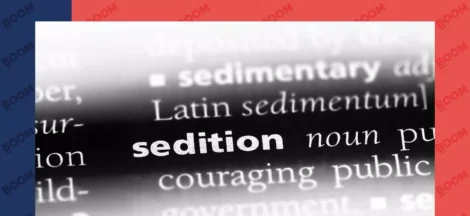By
Arun Srivastava
Like its interim budget, which not only
echoes the government’s recklessness more than its desperation, the Modi
government is contemplating to come out with an interim national sample survey
of employment to impress upon the electorates that there has been significant
and substantial job creation under Modi’s tenure.
Narendra Modi has come to realise the
importance of the term interim. Had it not been the case he must not have
allowed his minister to present an interim budget. Under the provisions of the
Constitution a government can have only five budgets in a full tenure, but our
prime minister has kept open the boulevard for bringing in any possible change
in the budget midway. The budget was not supplementary and obviously the proper
mechanism should have been adhered to. But he kept open the avenue for future
maneouverings.
Modi is known for speaking lies, but
now he has started concealing the facts and his not disclosing the real
employment figure is the best example. While the NITI Aayog boss Rajiv Kumar
claimed that the data in the reported NSSO survey was not verified, just a day
after the Ex-NSC Acting Chairman PC Mohanan rubbished the claim and said that
the numbers are final. Mohanan said that the report is final and doesn’t need
any further approval. In fact only two days ahead of this incident Mohanan
alongwith one senior member protesting against suppressing the truth.
The worst victim of Modi government
suppressing the facts has been the India’s statistical system which was always
the source of pride. Unfortunately it has been becoming a proxy for
institutional decay. The latest problem is the scooping of the National
Statistical Commission, a body entrusted with setting standards. Its last two
independent members put in their papers on Monday, leaving the seven-member body
with just two representatives, both from government. The proximate cause was
government delay in releasing a new series of employment data, which has been
ready for two months. This delay suggests a
casual approach to the economic policy.
The labour force participation rate,
which is the proportion of population working or seeking jobs, declined from
39.5 per cent in 2011-12 to 36.9 per cent in 2017-18. Household surveys are the
most comprehensive method of assessing the job market. For decades India had a
robust household survey for employment, carried out by NSSO at five-yearly
intervals. To plug the gap, in 2017 NSSO began a new household survey to
publish annual labour force data, the release is being delayed, keeping in view
the Lok Sabha elections.
It now transpires that the government
has been politicising the statistical system to suit its needs. The statistics
ministry belatedly released data for GDP last year, It delayed the employment
data. The National Statistical Commission was involved in a controversy over
the calculation of back series data after the Modi government intoned the
method of calculating the total value of goods and services. The autonomous
commission’s calculations found growth high during the Manmohan Singh years and
low during Modi’s,
Job creation being a critical measure
of the efficacy of economic policy, India needs robust and regular job data to
achieve better outcomes. An insight into the reasons for delay would reveal
that the entire exercise was to please the urban middle class. Modi and his
colleagues nurse the view that the middle class will help him again coming back
to power. Look at the budget. The entire focus has been on middle class. It did
not even care for the rural people and specially the peasants and farmers. Even
in the case of budget he played with the statistics and figures.
Modi government hide the employment
figure as it would have alienated and angered the urban middle class especially
the youth. Though Modi has been emphasising on job creation, he knew that it
was impossible task with the economic model he was pursuing. Obviously for this reason his government
discontinued the Labour Bureau’s quarterly enterprises surveys, with the last
report being released in March 2018. Moreover, the annual Employment-Unemployment
Survey was also scrapped in 2017. The
rate of unemployment among men in rural areas between the ages of 15 and 29
years jumped to 17.4 per cent in 2017-18 compared to 5 per cent in 2011-12.
Information
is crucial for democracy. It helps electorate to make informed political
choices. Before the 2019 Lok Sabha elections, voters have the right to know how
their elected government has performed. Suppressing official data on the state
of the country has the potential to seriously damage India’s democratic
institution.
One
thing is explicit that India can hide unemployment data for keeping the people,
particularly youth under dark, but at no cost it can hide the Truth. Look at the government’s decision to hastily
amend the Constitution to set aside 10 per cent of all government posts for the
“economically weak.” This is also a mechanism to appease the youth. Modi has
played mockery with the democracy by not keeping his promise to create jobs.
Narendra Modi had come to power in 2014 on the back of promises to create more
jobs. The real impact of demonetisation and GST on the unemployment rate in the
country could be far worse than what was portrayed by the headline figures
given in the National Sample Survey Office’s (NSSO’s) report for 2017-18.
The
report, which the government had withheld from being released said the
unemployment rate was 6.1 per cent in 2017-18, post-demonetisation, and was at
its highest level since 1972-73.
The
report showed that the unemployment rate among the youth was at a higher level
compared to previous years and “much higher compared to that in the overall
population”. The rate of unemployment among men in rural areas between the ages
of 15 and 29 years jumped to 17.4 per cent in 2017-18 compared to 5 per cent in
2011-12. The unemployment rate among women in rural areas stood at 13.6 per
cent in 2017-18 compared to 4.8 per cent in 2011-’12, according to the survey.
The
Center for Monitoring the Indian Economy, a well-respected business information
company that collects primary data on various aspects of the Indian economy,
estimates that the country’s unemployment rate in December 2018 reached 7.38
percent. The Modi government’s economic policy has been disproportionately
focused on some big corporations, neglecting small firms and traders, the
agricultural sector and most workers. The results are now showing through the
interim budget and hiding of the unemployment statistics. (IPA Service)
The post Bjp Govt Is Building Electorate Castle Based On Lies appeared first on Newspack by India Press Agency.


